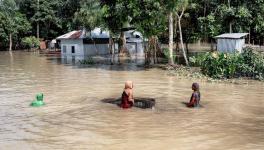Durban Climate Agreement: The Morning After
The EU had made clear that it would support extension of the Kyoto Protocol into its second commitment period only if a new legally binding instrument was agreed upon. Therefore, upon the compromise formulation being agreed upon, the Kyoto Protocol was also extended to 2017 at Durban, although only the EU committed to be part of it with the US anyway having never signed on, Canada walking out, and Russia, Japan and Australia stating that they will communicate their decisions later. In any case, with agreement on the Durban Platform, it is now clear that the Kyoto Protocol will be replaced by the new Treaty or other international legal instrument.
Single framework But it is not only the Kyoto Protocol as an instrument that is being replaced, but the principle at the heart of it, namely the dual framework wherein the developed countries had legally binding emission reduction targets but developing countries did not, instead only being required to take “mitigation actions” contingent upon transfer of finance and technology from the former. In contrast, the DPEA now explicitly states that the new instrument will be “applicable to all Parties,” ie both developed and developing countries, under a single framework. As argued in these columns, the Copenhagen Accord and later the Cancun Agreement had specifically laid the foundations for dismantling this firewall between the developed and developing countries. This goal, of bringing about a single framework replacing the Kyoto duality, pursued over many long years by the developed countries led by the US, has finally come to fruition at Durban. So much so that Todd Stern, the US climate envoy, has pointedly stated that the single framework was the biggest achievement of the Durban Summit and vindicated its long-held position. Again, much has been made in sections of the Indian media, quite obviously to drum up support for the Environment Minister and her performance at Durban, about India having succeeded in ensuring acceptance of equity in the Durban Platform in exchange for acquiescing to the new instrument. There is in fact no mention in the DPEA of either “equity” or the Kyoto principle of “common but differentiated responsibility” or CBDR. This is now sought to be explained away by the Minister and her champions in both media and civil society, who point to the DPEA stating that the new instrument would be “under the Convention” thus implicitly endorsing the equity principle enshrined in the UN Framework Convention on Climate Change (UNFCCC) under whose auspices all the negotiations are held and the Kyoto Protocol was enacted. This argument however does not hold water. The Convention certainly and explicitly recognizes equity and CBDR. But the fact that the US could remain a signatory to the UNFCCC while opposing the Kyoto Protocol, and the fact that the Copenhagen Accord and Cancun Agreements drove a truck through the Kyoto firewall between developed and developing countries, also under the Convention, shows that operationalizing equity and CBDR is not a cut and dried matter. But the very fact that there was not even a token mention of equity or CBDR, indeed that mention of these was actively resisted by the US and the EU, is indication that these principles are consciously and deliberately sought to be kept out.
Climate crisis and the Science So much attention has been focused on the form of the agreement, that the issue of what the agreement was supposed to address, namely the climate crisis, seems to have receded into the background. IPCC’s Fourth Assessment Report of 2007 had indicated that global emissions needed to peak by 2015 and decline to around 50% by 2050 if temperature rise needed to be contained within 2 to 2.5 degrees C. Since then, with no signs of declining emissions and with underperformance of developed countries with reference to even the very modest Kyoto targets, the climate crisis has steadily worsened. The UN Environment Programme (UNEP) had, in a 2010 study on the eve of the Cancun Summit, pointed out whereas global emissions ought to be maximum 44 GtCO2e (Giga-tonnes or billion tonnes carbon dioxide equivalent) in 2020, there was a substantial “emissions gap” of 5-9 Gt if the 2 degree limit was to be achieved even if all the voluntary pledges made at and after Copenhagen were adhered to. UNEP’s latest Emissions Gap Report released just before Durban says this gap has only widened leaving over 6Gt gap by 2020. And now the Durban Platform promises only that a new instrument will be agreed by 2015 and these new targets will come into force only in 2020. Clearly, there is therefore great likelihood that the emissions gap will widen further. In other words, we are staring down the barrel at average global surface temperatures rising more than 3 degrees C. So much then for the oft-repeated global goal of keeping temperature rise to under 2 degrees C, with the added sweetener that an even lower target of 1.5 degrees could also be thought of! Evidently, these “goals” are only notional, intended to please critics, and not meant to be actually fulfilled.
The Durban Platform even makes a somewhat similar tall claim that it the DPEA process “shall raise the level of ambition and shall be informed, inter alia, by the Fifth Assessment Report of the Intergovernmental Panel on Climate Change [and] the outcomes of the 2013-2015 review” of the progress made on Kyoto targets and Cancun pledges. It is already pretty well known that scientific findings, which will guide IPCC/AR5 due in 2013-14, point to even more severe changes in climate and greater impact than earlier thought.
With the DPEA process sought to be tied to the next IPCC Report in this manner, and given the manner in which the IPCC’s Fourth Report (IPCC/AR4) had so deeply influenced thinking across governments, scientific institutions and civil society, it is now very likely that the IPCC Fifth Report will become the focus of sharp contestation by governments seeking to influence or shape its findings and especially its recommendations. IPCC/AR4 had highlighted the need for developed countries to reduce their emissions by 40 percent by 2020 and 95 percent by 2050, and much of the debate and negotiations from Bali onwards had revolved around these figures. Since the IPCC’s Reports are not published only as scientific documents but are also signed by governments, enormous pressure will now come to be exerted to modify the findings or word them differently or change the recommendations made in IPCC/AR5. National governments of developing countries, scientists and civil society organizations should in the coming months and years monitor this process very carefully and see to it that scientific opinion is fully and fearlessly expressed in the next IPCC Report. Towards the future
The very ambiguity of the Durban Platform as regards the future architecture of the new global compact, which is today permitting nations with very different concerns and objectives to claim victory for their points of view, also means that the DPEA process is open to and does not foreclose options. While it is true that DPEA has an in-built bias in favour of a single framework for developed and developing countries, it does not mandate that both categories of countries should undertake the same magnitude of emission reduction obligations. This is the favourite US goal of “symmetry” which it falsely claims it has achieved through the Durban Platform. The scope for building in differentiation among countries even within the single framework in fact still remains in the Durban Platform, wherein historical contribution to accumulated stocks, current levels of per capita emissions and similar criteria can be incorporated to determine different emission reduction or slower growth rate targets and timelines for different categories of countries. But if India, along other large developing countries, wants to achieve this, then it will have to do many things it has not done in any significant measure so far. India requires to do far greater technical and analytical work to build solid justification and backing for any stand it wants others to take seriously. Rhetoric and flourishes of the English language will no longer carry even the weight they perhaps once did. A huge amount of work is being done in other countries such as the US, the EU, China and Brazil whereas, with a very few notable exceptions, India has very little of substance to back its claims. Efforts of government, scientific and academic institutions, and independent think tanks require to be stepped up, supported and coordinated.
At the political and diplomatic level, a huge deficit that has only increased sharply in the recent past requires to be overcome. The Durban summit cruelly exposed the extent of India’s isolation in the international community on the issue of climate change. The EU’s proposal for an agreement towards a new global compact was able to win over not only the Island States and LDCs, but also India’s BASIC allies Brazil and South Africa. The US, to whose apron strings India tried to stay tied for the first half of the Durban conference, finally decided to go along with the EU knowing that it is still not committing to anything definitive and can yet work its way towards its preferred bottom-up pledge-and-review model in a new Treaty or as an “outcome with legal force.” China read the writing on the wall, as India would have been well advised to do, and recognizing that it would sooner or later have to agree to some emission restraints, backed out of a prolonged confrontation at Durban. India was left splendidly alone, and that too without any clear idea of what it was holding out for.
Quite apart from the legalities, India made a major error of judgment as regards the mood of the majority of delegate nations in opposing the EU’s idea of a new legally binding instrument. Faced with the certainty of massive impact due to climate change, the most vulnerable nations such as the Small Island States and the LDCs have long been clamouring for a definitive, ambitious, legally binding international Treaty to control GHG emissions. For many years now, these countries, looking at China and India with their galloping economies and seats at the high table of global powers, have increasingly been feeling that with China and India too should take on their share of responsibility for tackling climate change. India’s do-nothing stance and what was perceived as opposition to any progress in global negotiations has been a huge diplomatic negative. At Durban, Grenada’s delegate speaking on behalf of Island States, not explicitly addressing India but given the context surely pointing in that direction asked, “Why should we sink while you develop?” Point is that, whatever be the nuanced differences of approach of different negotiating dispensations in the Indian establishment between climate summits, a common feature over the past several years has been to align India’s position on climate change with that of the US and other developed countries. It is high time India turned around and put national and global interests first.
Image Courtesy: un.org.me
Get the latest reports & analysis with people's perspective on Protests, movements & deep analytical videos, discussions of the current affairs in your Telegram app. Subscribe to NewsClick's Telegram channel & get Real-Time updates on stories, as they get published on our website.
























